For those of us who have used a TLR camera, any invitation to use one again is a wonderful excuse to enjoy it. The mechanisms, the construction, the finish, the enormous waist-level viewfinders, the slow process of using them because you only have 12 frames per film, and the feel in your hands when using these cameras… it’s a unique experience.
A 24 year relationship.
I acquired my Yashica Mat 124G in early 2001 to begin shooting medium format photography. By then, film photography was beginning to suffer the ravages of the rise of digital photography, and I must admit that my enjoyment of using my Yashica Mat 124G lasted only a few years. I must have used about 50 rolls of film before I couldn’t get any more film at the beginning of the last decade. Here in Mexico, it’s not always easy to find photographic materials in stores, and film prices skyrocketed.
The Covid pandemic ended up closing almost all the stores where I used to get film, chemicals, and photographic paper… But now (thanks mainly to the fact that it’s available online), I can get film again, and I’m going to take advantage of this opportunity. When I bought this camera, I wasn’t fully aware of what a gem I was acquiring: a perfectly finished, scratch-free finish, a Yashinon lens in perfect condition and a very clean viewfinder, a hard case and strap, close-up lenses, and a Wide-Angle Auxiliary Lens. But I was able to get it at a very low price because all film cameras dropped drastically in price at the beginning of this century.
A camera from another era, ever since it was first released…
In the early 1970s, when it was released, the Yashica Mat 124G was already a camera with features that bordered on obsolescence; but the manufacturer’s greatest success was understanding the delightful user experience that a camera like this provides. The Yashica Mat 124G is an 80mm twin-lens TLR, designed by Yashica with features very similar to the Rolleiflex. For this reason, the same filters, hoods, close-up lenses, and auxiliary wide-angle and telephoto lenses can be used interchangeably on both systems. In my particular case, I was lucky enough to find my camera in a used equipment store with several accessories that I purchased separately, these included a square lens hood, a set of close-up lenses, a set of auxiliary wide-angle lenses, an adapter for mounting an electronic flash on the accessory shoe, a Yashica wide strap and a black plastic-leather hard case.
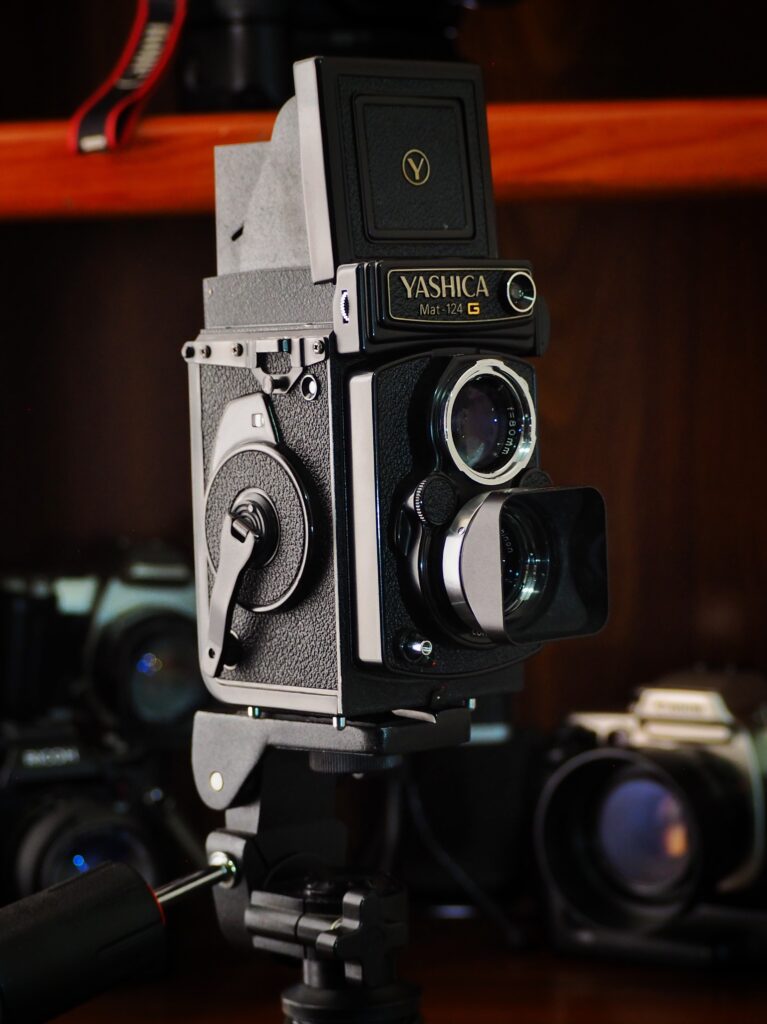
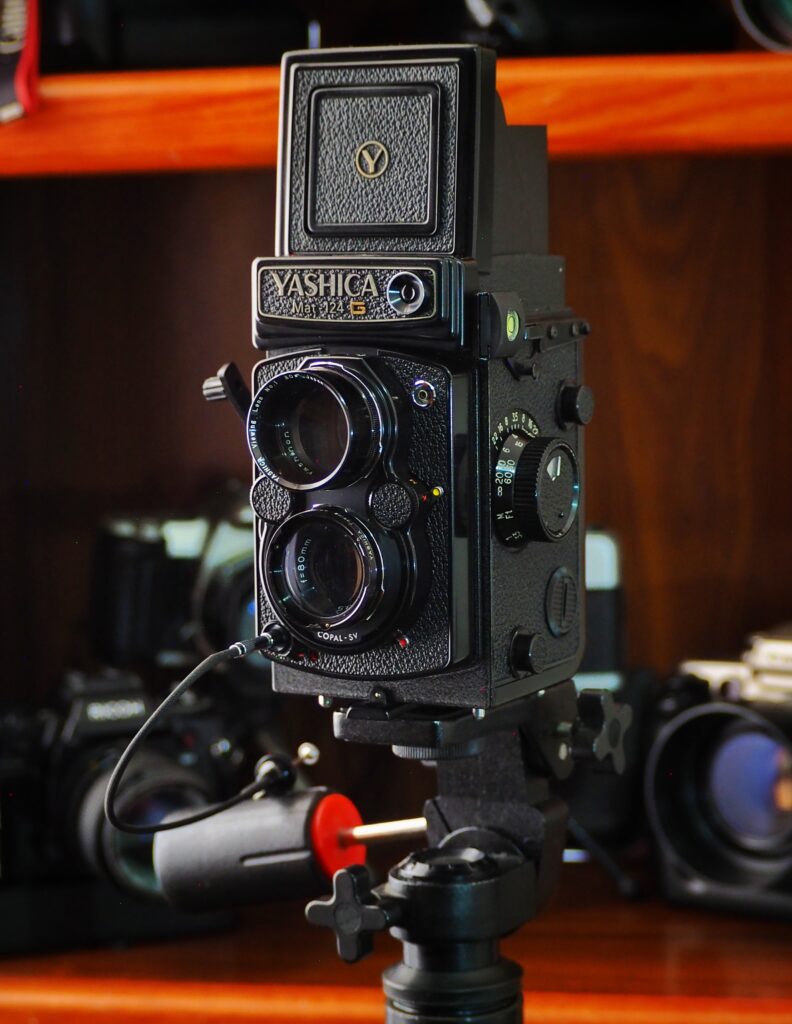
With the added advantage of being able to connect flashes via the camera’s x-contact. And with the disadvantage that the camera’s light meter uses an old Varta 625 U-LR9 1.5V alkaline battery that hasn’t been manufactured for many years. I’m lucky enough to have two of them that still work! This means I haven’t had to search for adapters to use more modern batteries. It’s worth mentioning that the light meter is quite accurate, and although I’ve heard from other users who have had problems with it, the one on my camera has worked very well for the 24 years I’ve owned it. It works so well that I haven’t had to use handheld light meters to check exposure.
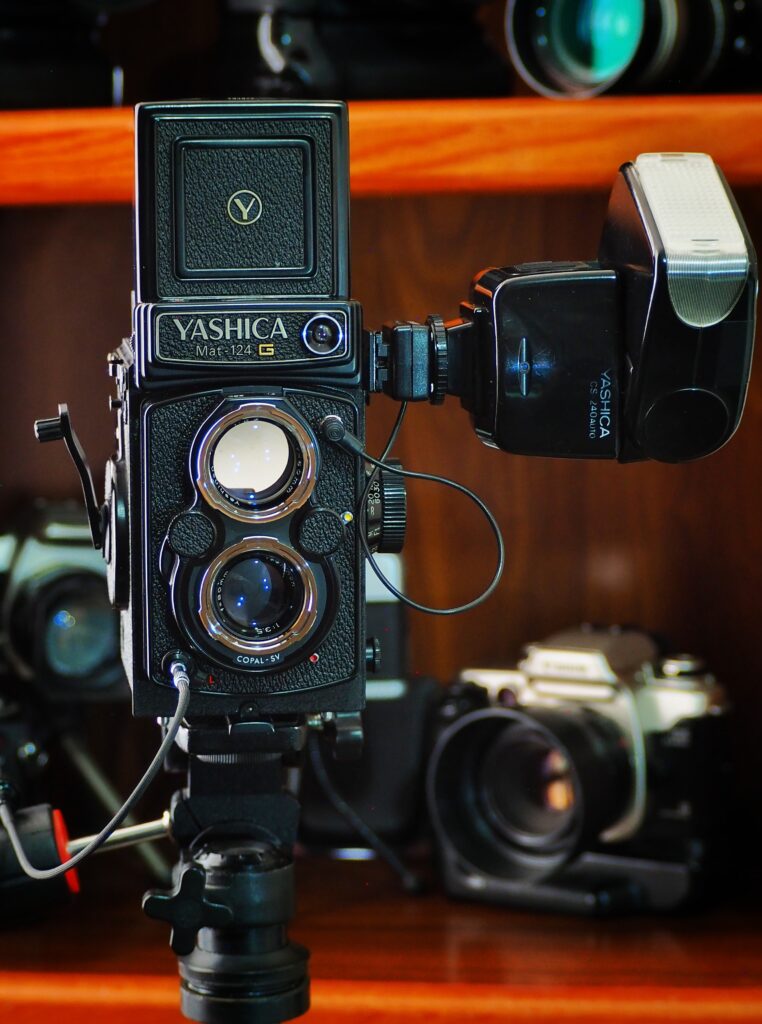

A reunion that makes me happy
The “TLR Challenge” that Geoff Chaplin proposed to us last year (using, admittedly, considerably less than 50 rolls of film in a year…) is also a great excuse to grab my Yashica Mat 124G and go out and do one of the things I love most: walking around Mexico City and taking pictures. I’ve been living in Mexico City for 52 years. It’s enormous, with hundreds of years of history (it was founded in 1325 with the Aztec name of Tenochtitlan), and full of monuments and historic buildings, almost all from the era of the Spanish Viceroyalty. It’s an endless treasure trove of photographic subjects to search for, interpret, and photograph. For that reason, I chose the heart of downtown Mexico City to take my first photos after several years of not using my Yashica Mat 124G, using Kodacolor Gold 200.
A little disappointed…
I’m sharing 5 of the images I took on a Sunday in January of this year in Mexico City’s central plaza, called the Zócalo (its official name is Plaza de la Constitución). And I’ll give you a sneak peek… I didn’t like the results… The Yashica Mat124G has given me beautiful images, especially of portraits taken in gardens and in my home studio. The sharpness of the Yashinon 80mm and the very fine grain achieved due to the size of the negative have delighted me on many occasions when I’ve used it in the past.
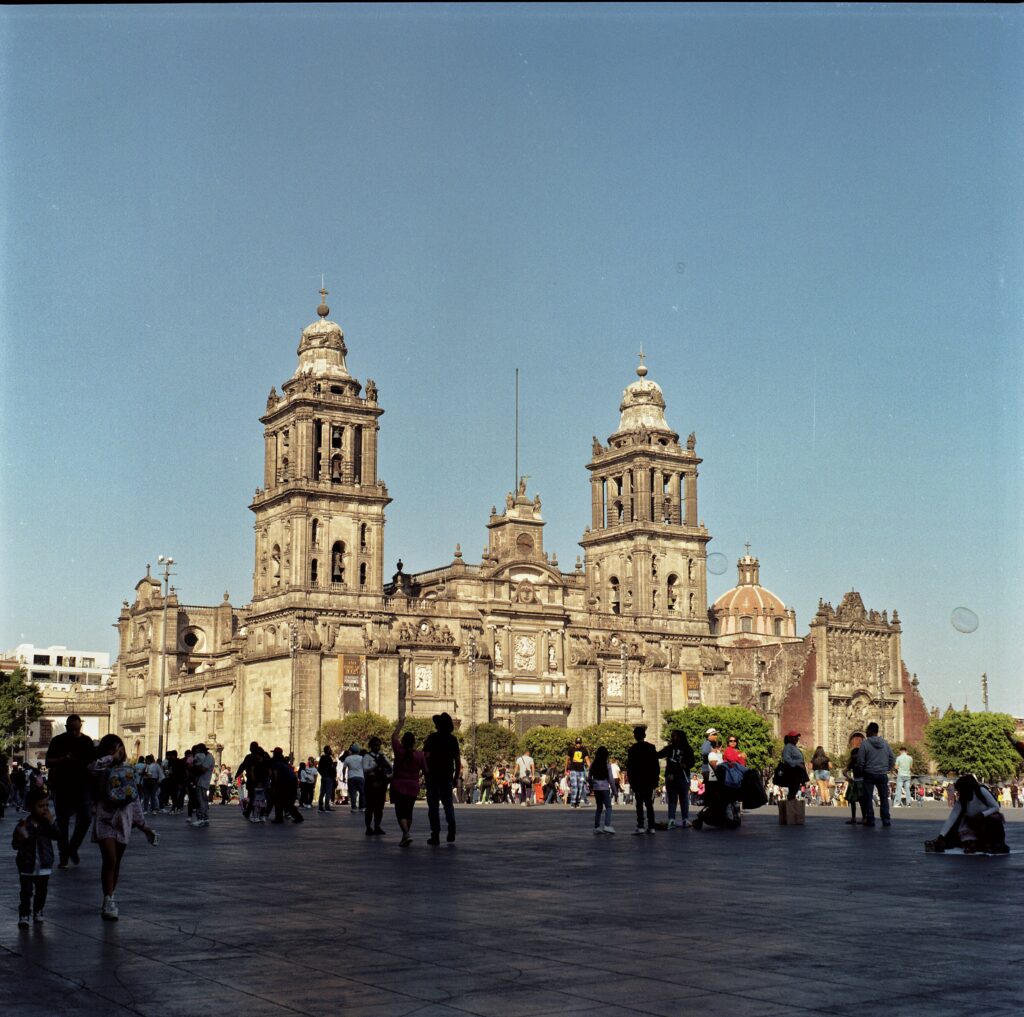
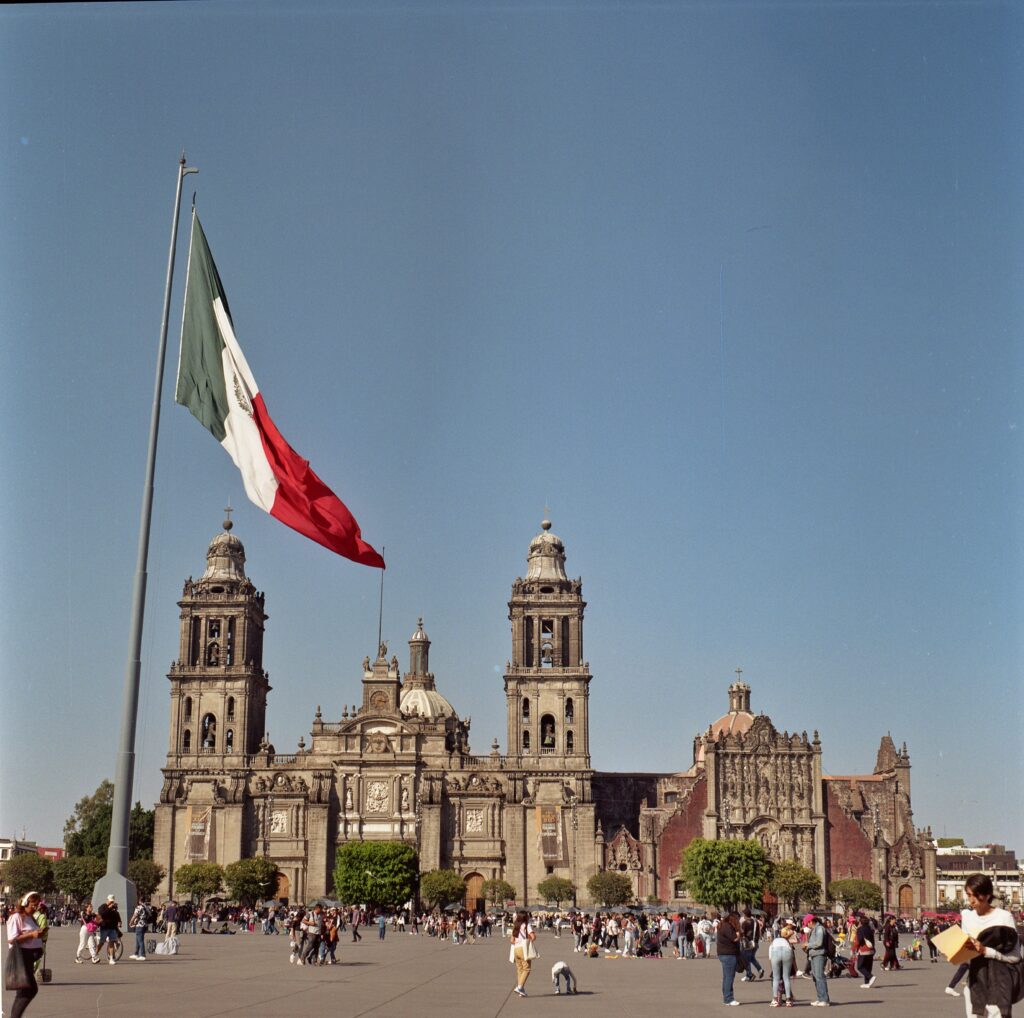
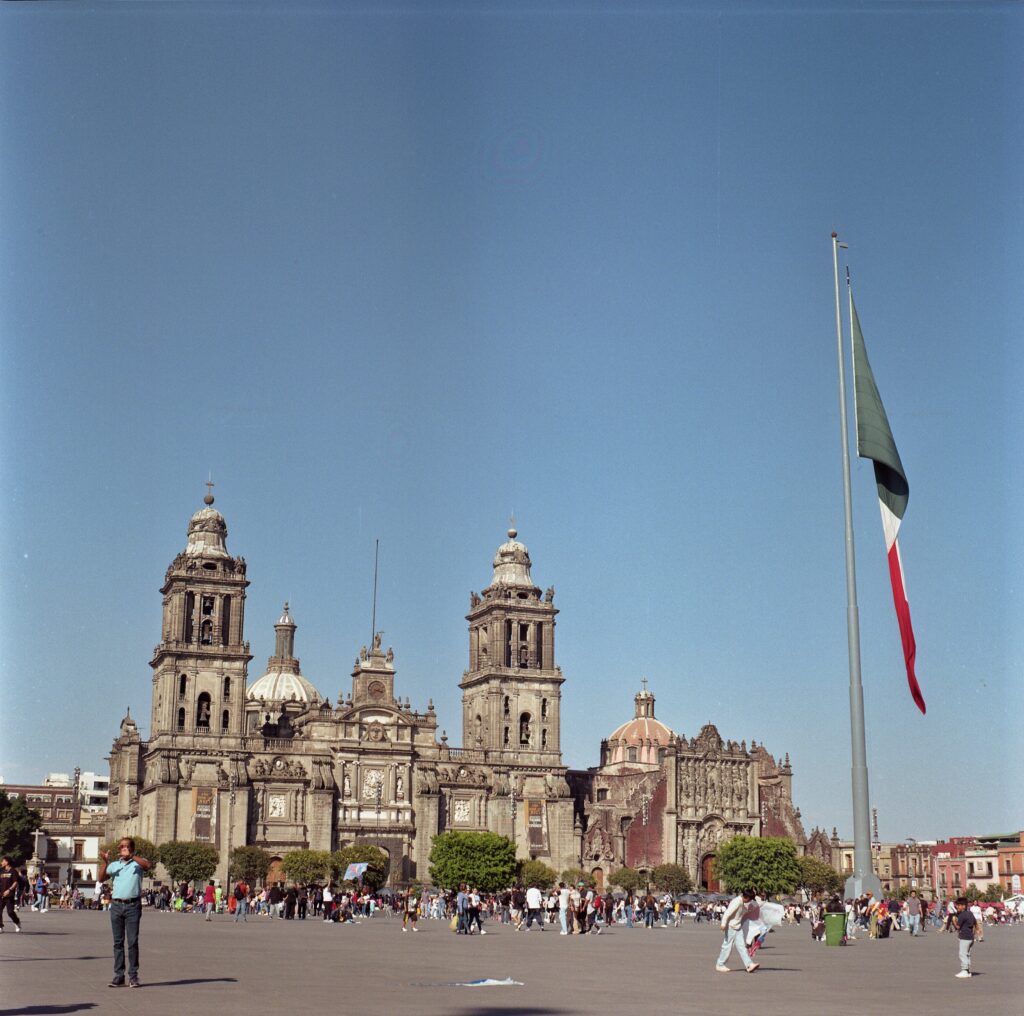
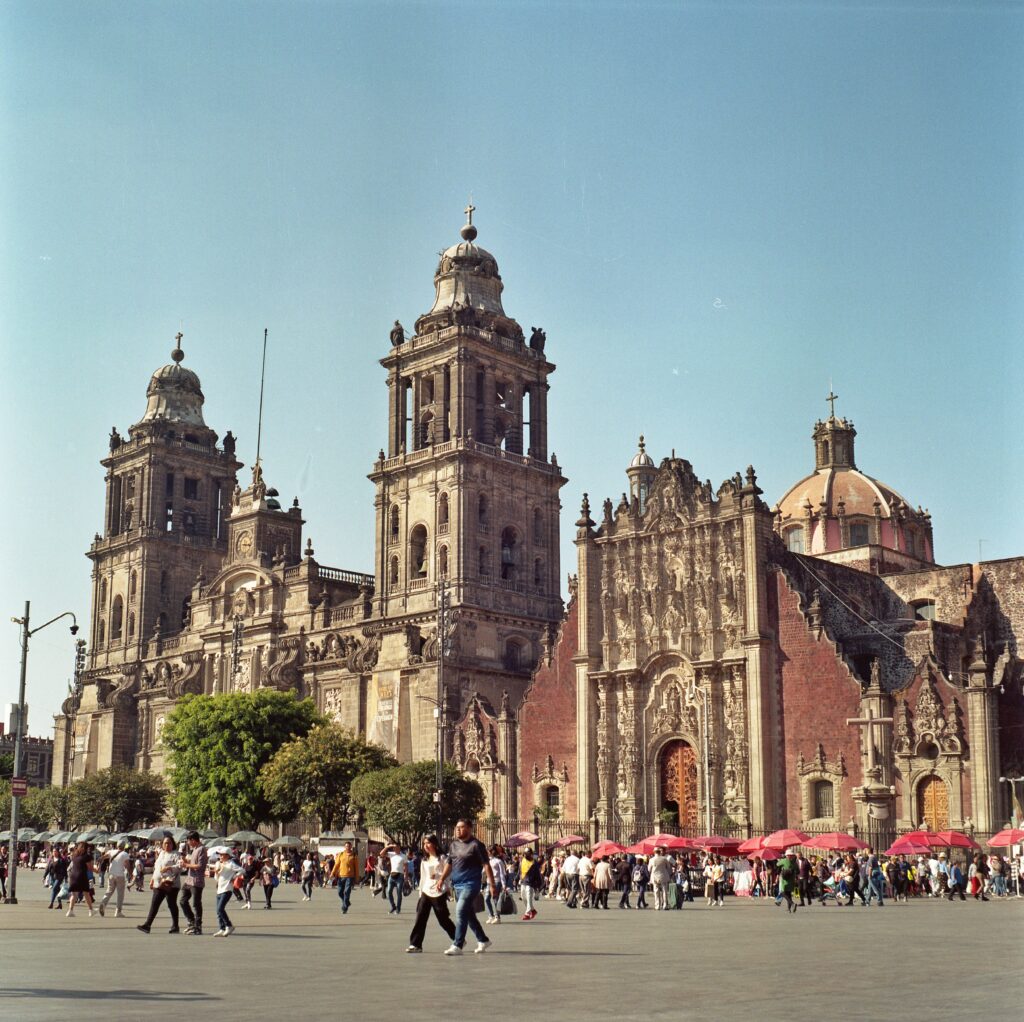
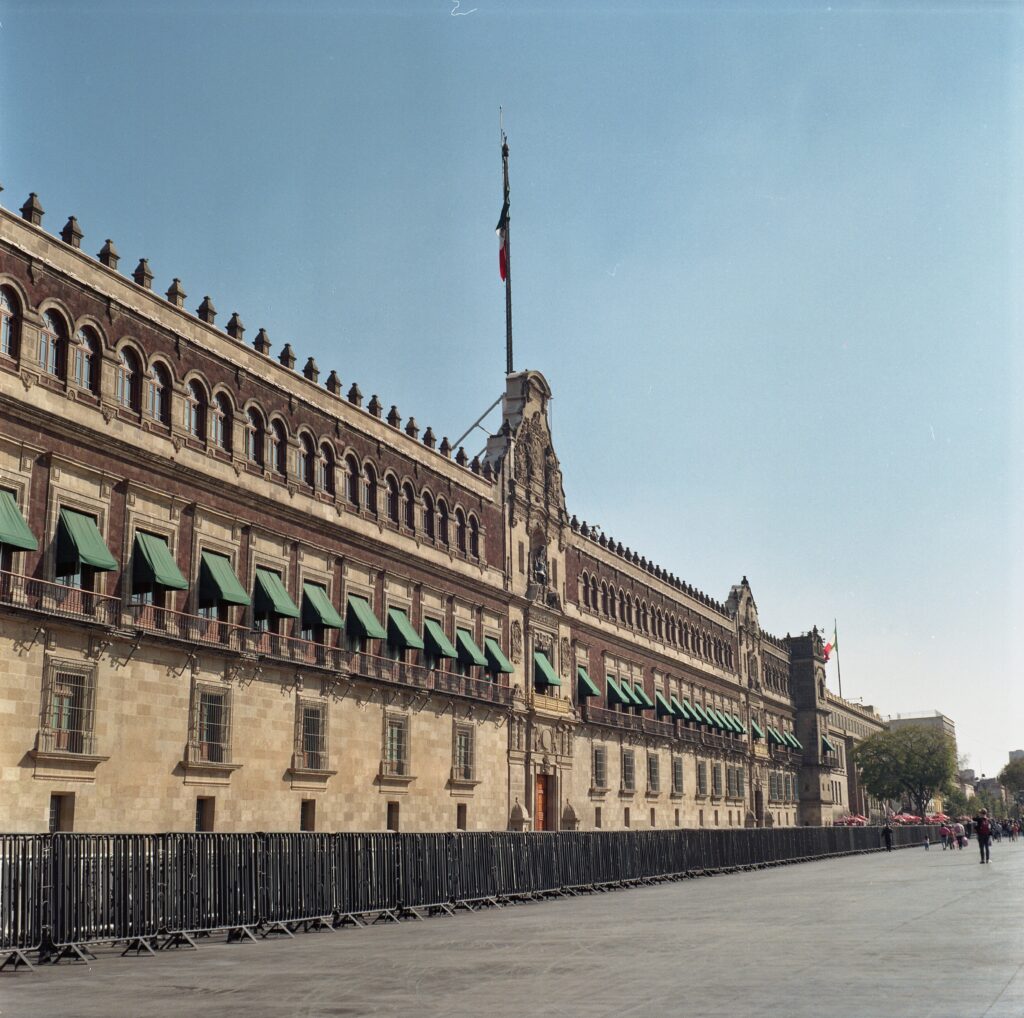
But this time, that wasn’t the case… and I’ve identified the source of the problem: the lab that processed my film. I don’t know what method they used to develop my film (in a developer tank or using a Minilab) or the quality of the developer they used, but the result was horrible gray lines (or darker colored tones) running across my images and very dull colors (maybe they used an exhausted developer). I’ve used Kodacolor Gold many times in the past and know the results can be much better. It seems that the operators of the developing equipment now lack the experience of the old labs, where some of them had been doing this work for a lifetime… and it’s very noticeable in the final result… They only leave me with the option of finding a new developing lab or reprocessing the films at home… I’ve digitized the negatives with an Epson Perfection V660 scanner, which has always done an impeccable job, but this time the negatives didn’t help much… In the lab, they left chemical stains on the film and the aforementioned gray streaks…
Determination…
Yes, one of the photographer’s best tools: Determination. That stubborn obsession that leads us to repeat something over and over again, trying different options until the result is what we want… Anyway, the experience of using my Yashica Mat124G again is, as always, a luxury… and I will try to repeat it as many times as possible in the future. I will therefore continue walking around Mexico City with the camera in my backpack… I’m also sharing some images I took with an Olympus OM D EM10 MkII and with my cell phone that same day, which will allow you to compare results and see the beautiful light of the golden hour sunset in downtown Mexico City.
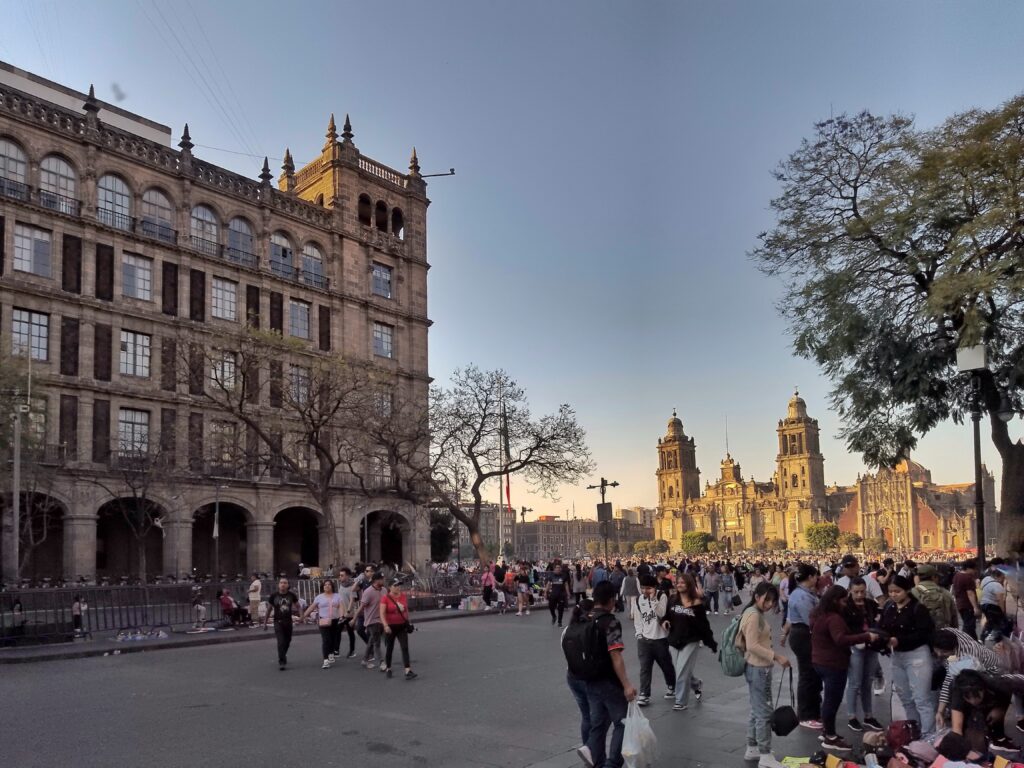
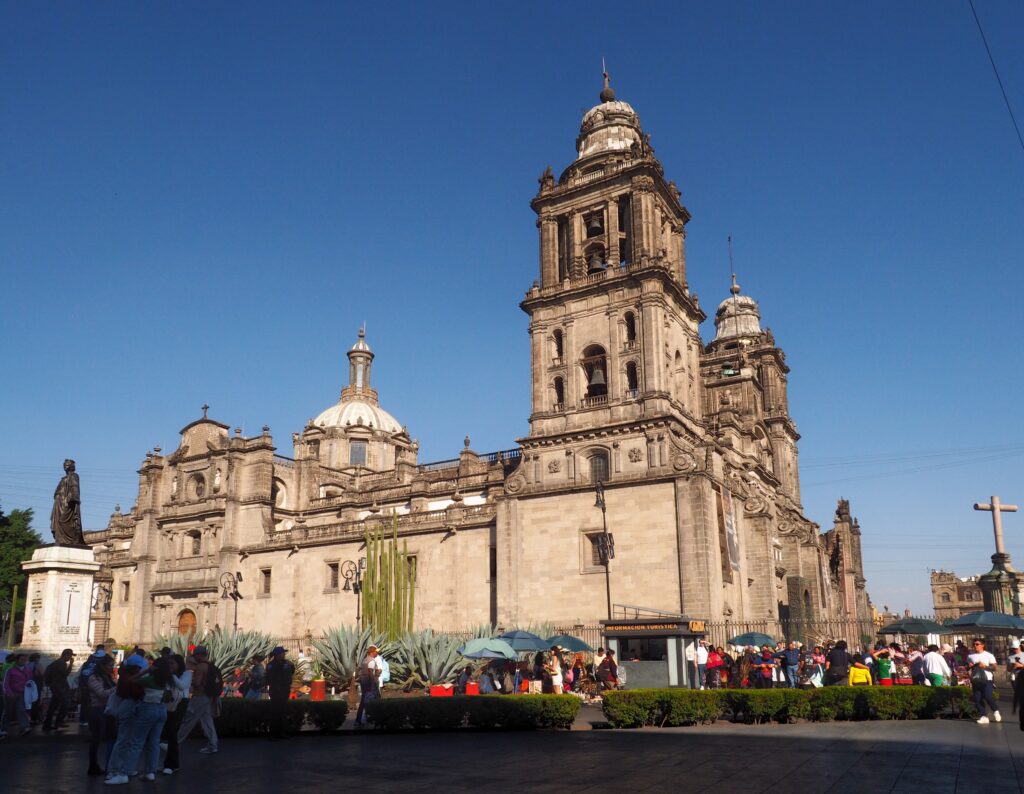
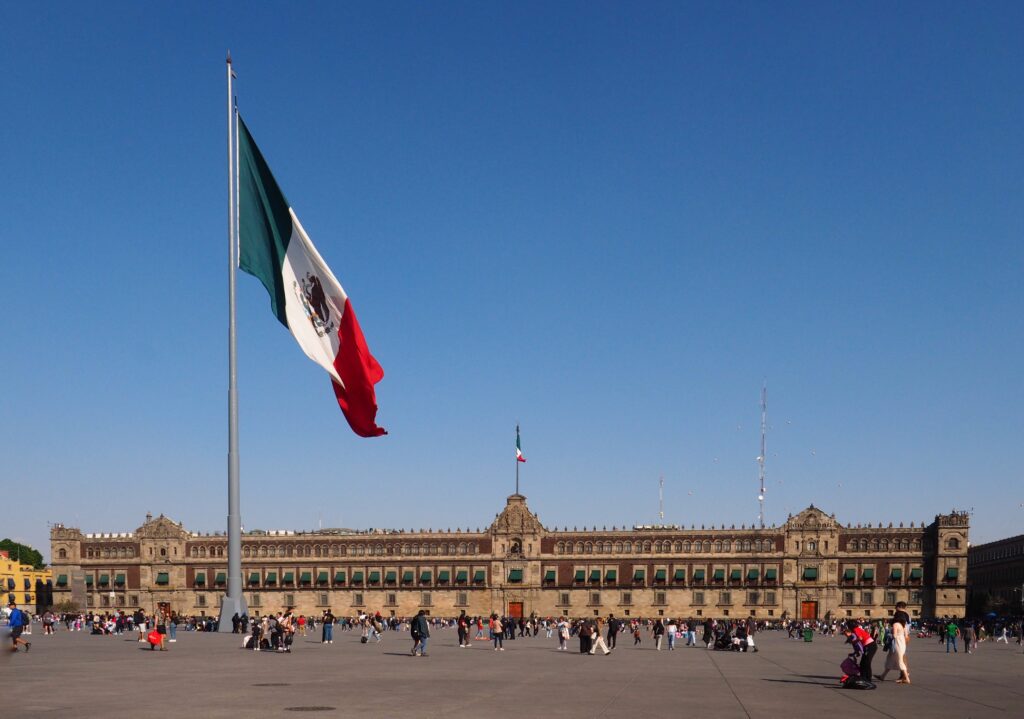

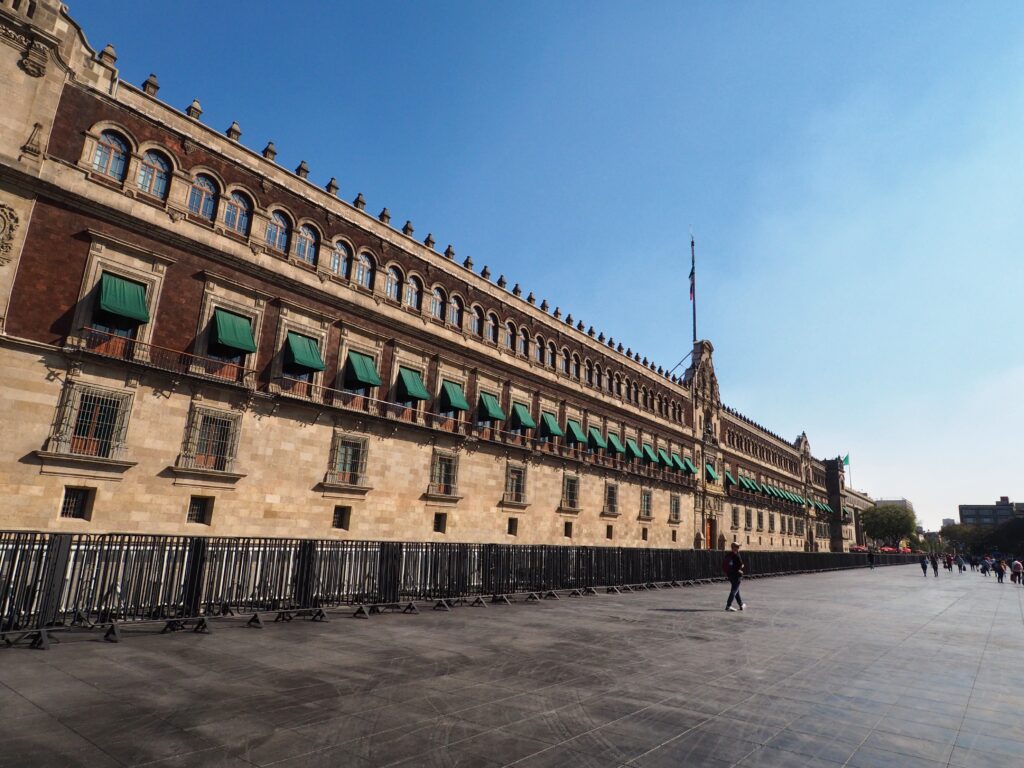
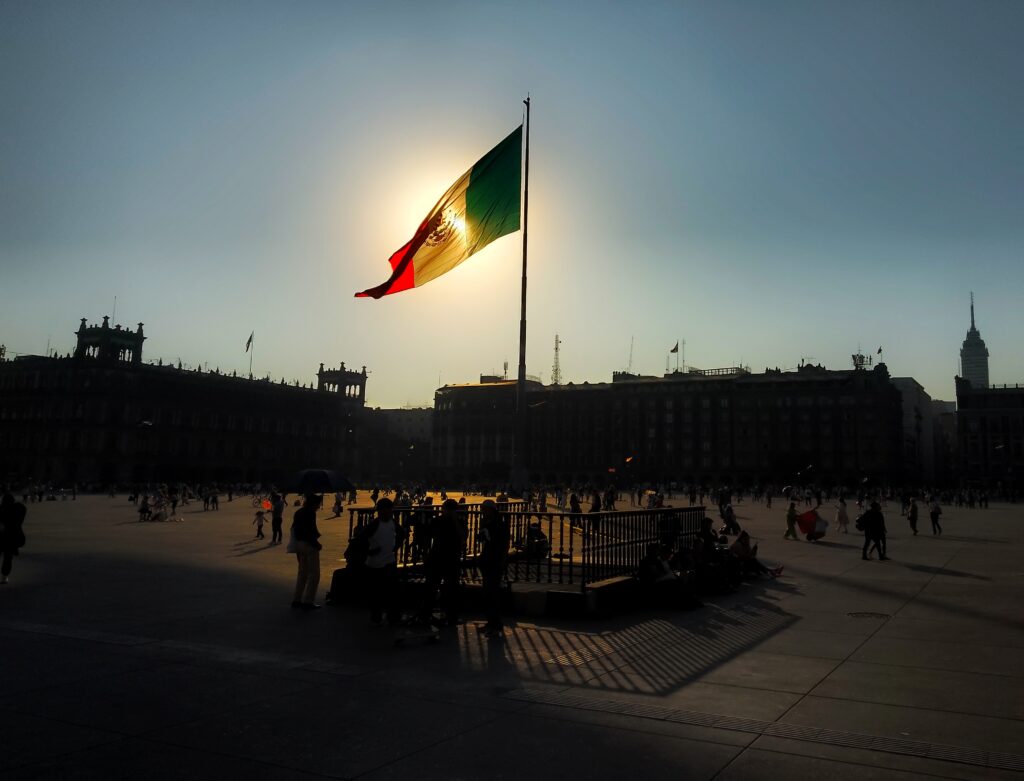
I hope this story inspires you to take your film cameras out of the closet and enjoy the process of using them…
Leonel LeyCar.
Share this post:
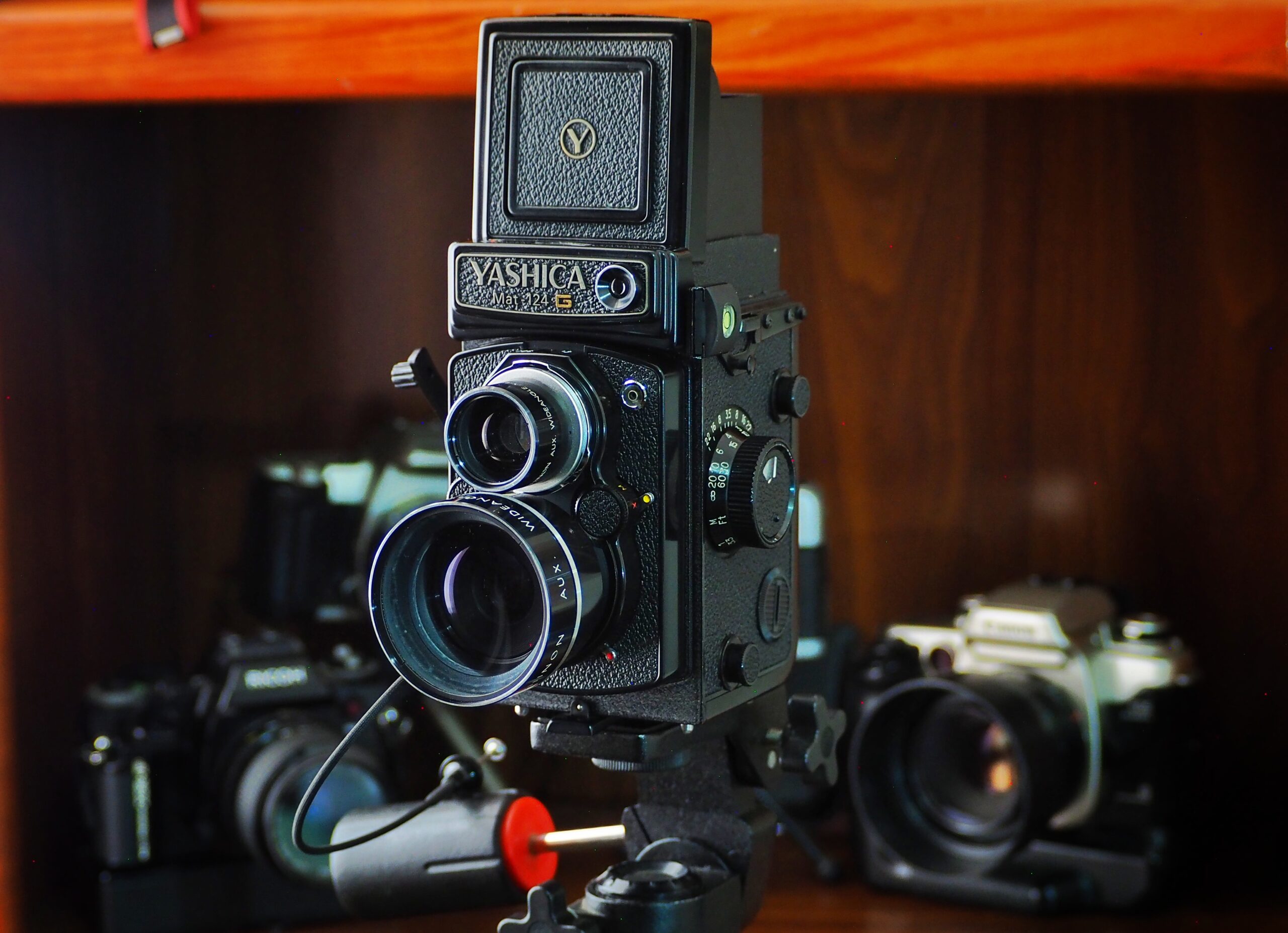
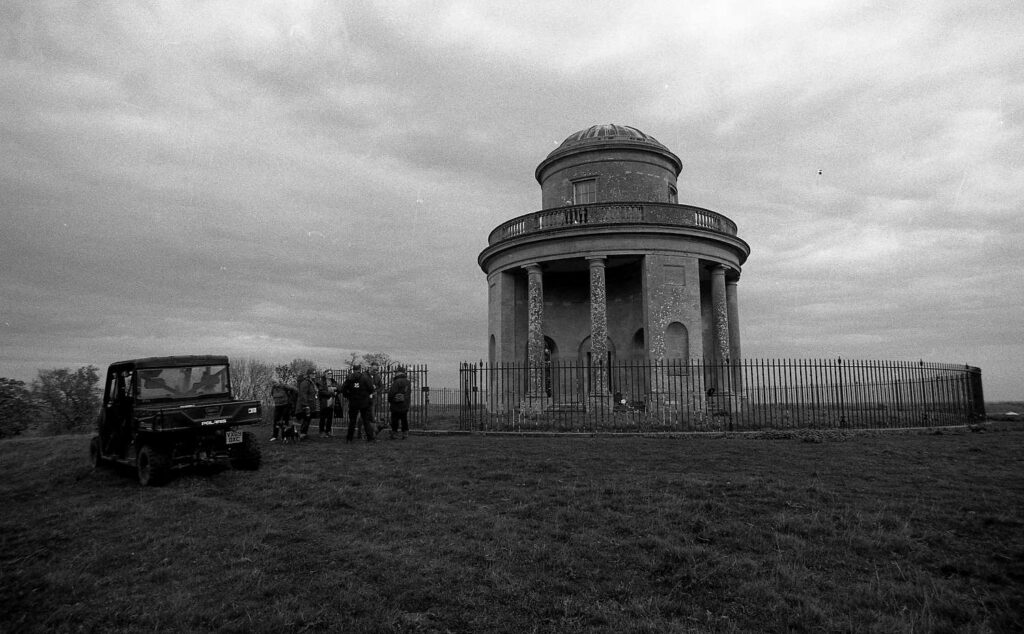
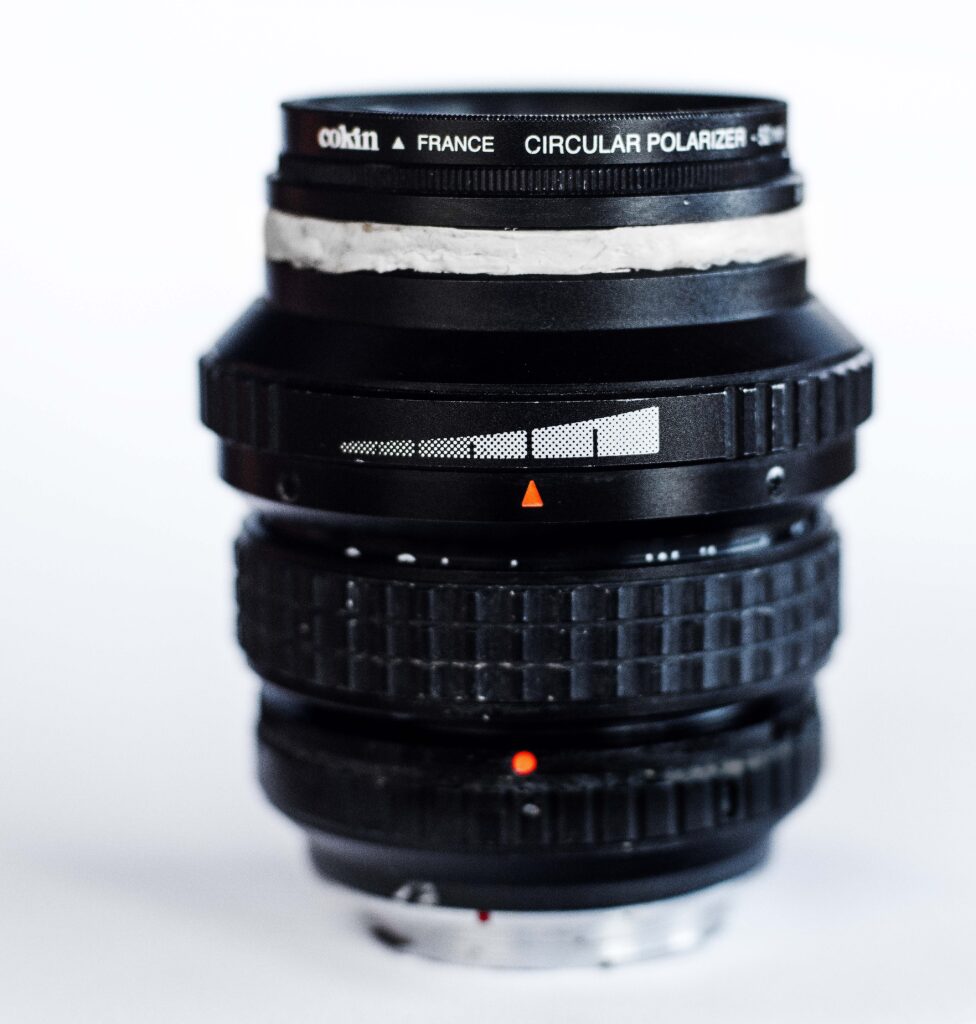
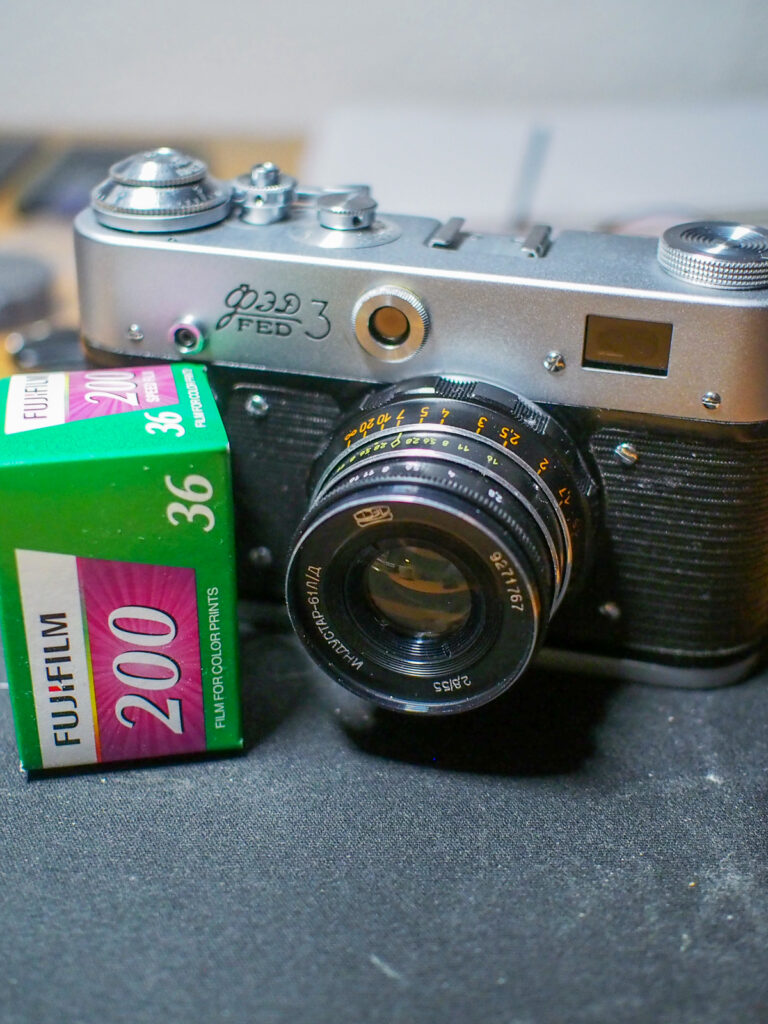
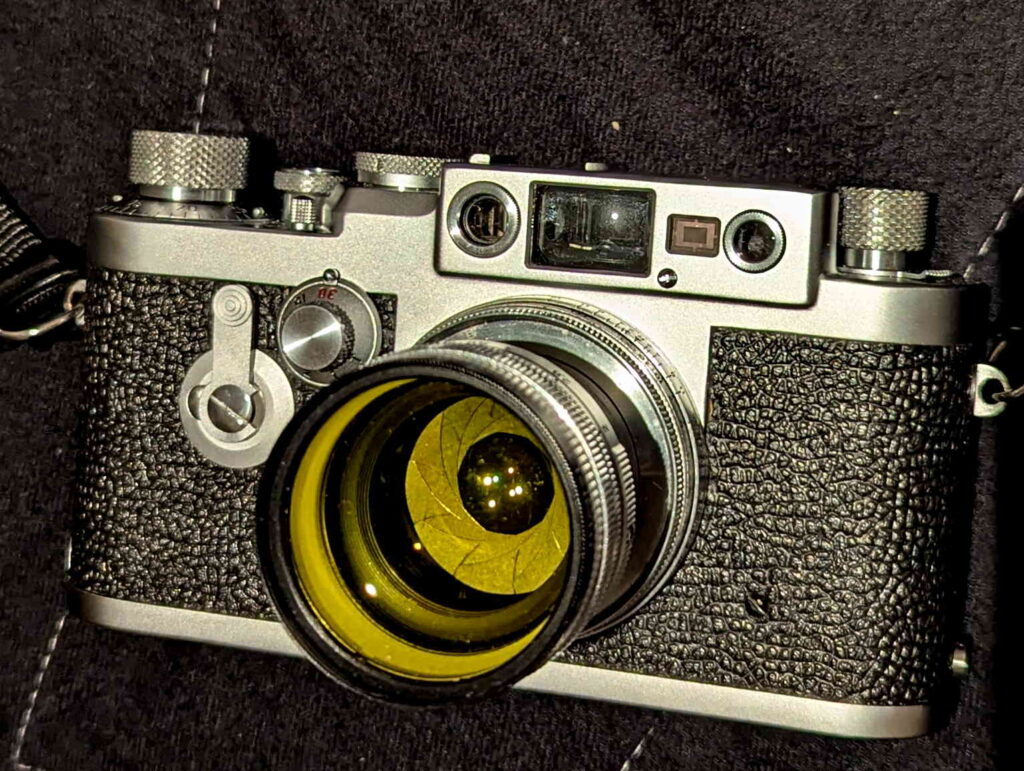
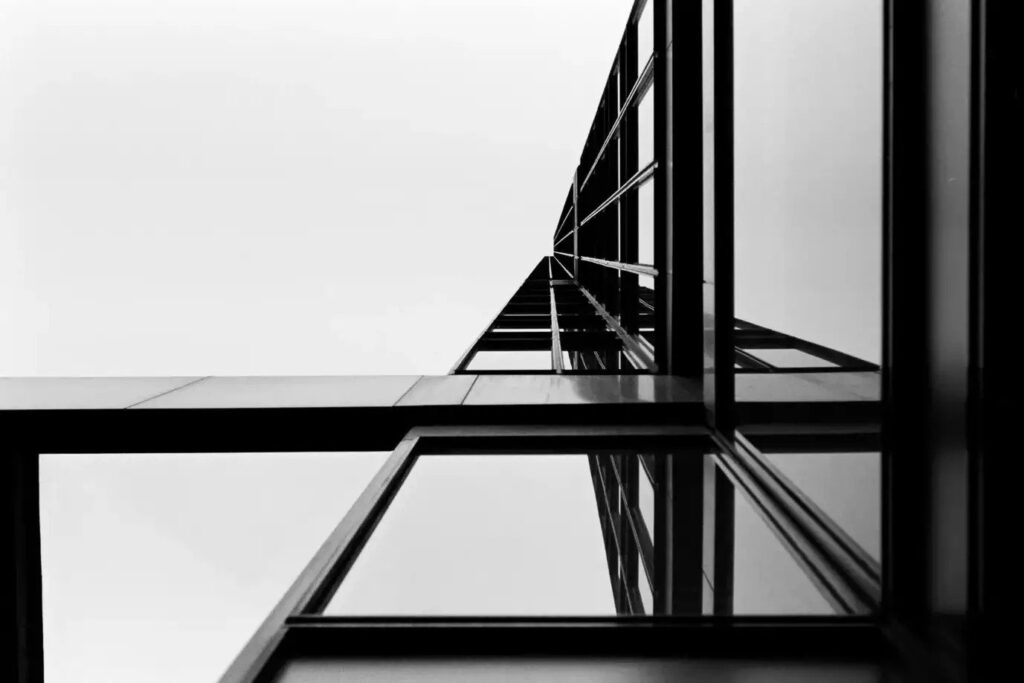
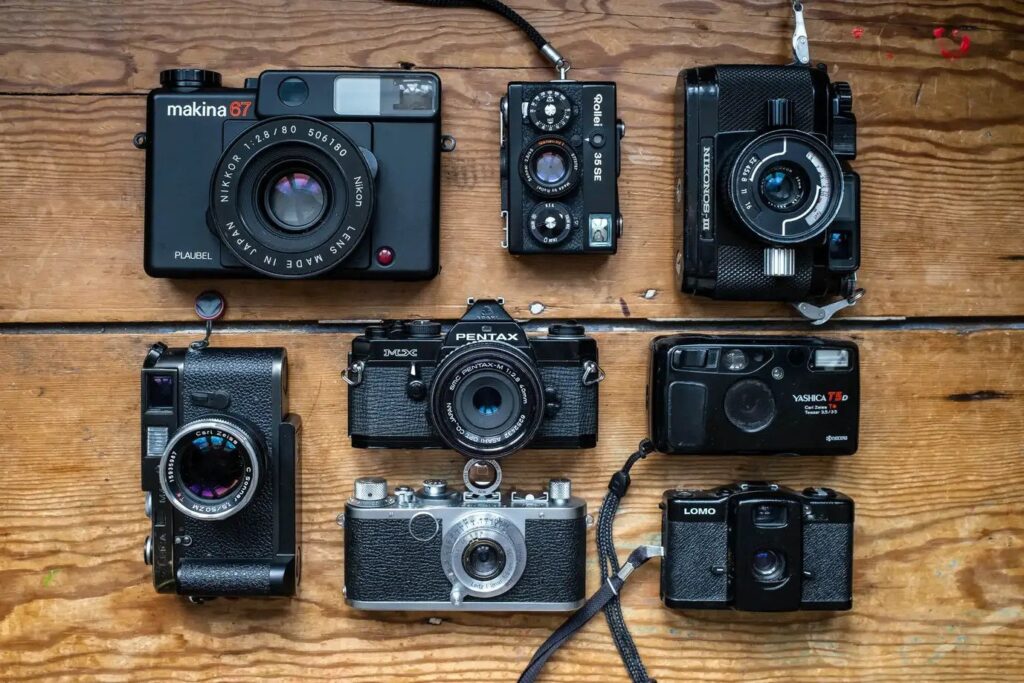
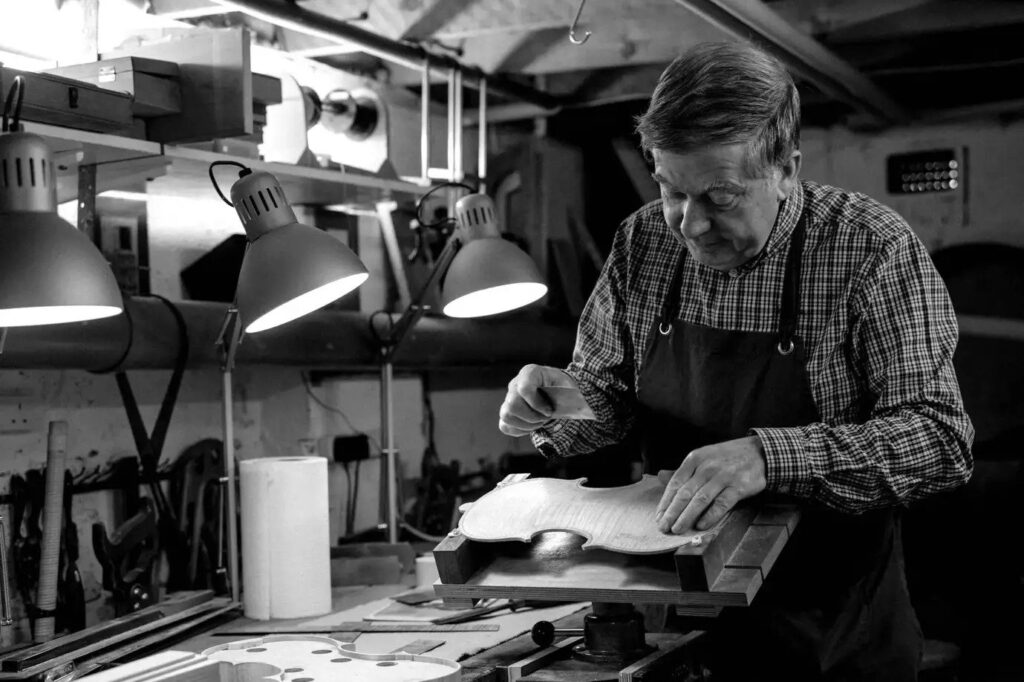
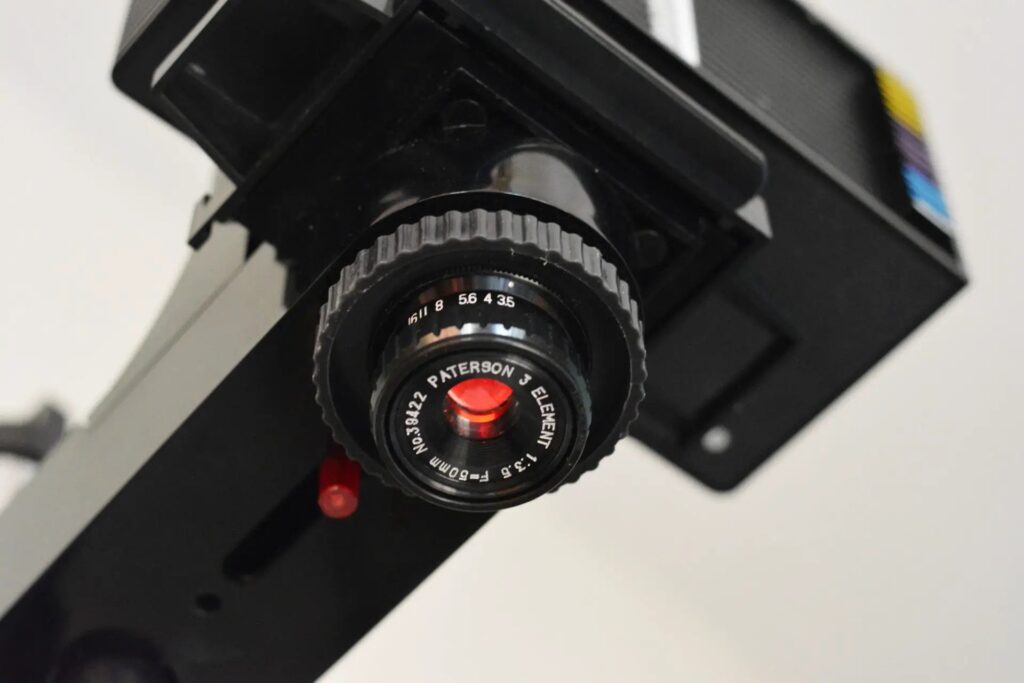
Comments
Thomas Wolstenholme on 5 Photographs taken with a Yashica Mat 124G in the Zócalo of Mexico City.
Comment posted: 24/07/2025
Comment posted: 24/07/2025
Geoff Chaplin on 5 Photographs taken with a Yashica Mat 124G in the Zócalo of Mexico City.
Comment posted: 24/07/2025
Comment posted: 24/07/2025
Chris on 5 Photographs taken with a Yashica Mat 124G in the Zócalo of Mexico City.
Comment posted: 24/07/2025
For that case, I enjoyed the Mat124G.. but if I would need to decide between the two, I would for sure pick the Rolleiflex (with its Planar lens).
Great Cam, but not my first option when it comes to TLRs.
I also can second the opinion of Geoff, develop yourself at home... for much more consistent results... it's so easy with today's tools and chemistry.
Robert Swinson on 5 Photographs taken with a Yashica Mat 124G in the Zócalo of Mexico City.
Comment posted: 24/07/2025
Hopefully you can find a reliable lab as Mexico is a wonderful country to photograph.
BTW, I recently resumed shooting film. I found a lab here in Florida that can develop and scan reliably. I had planned to develop and scan myself to keep costs down but found that after enduring many projects by my wife our Epson scanner isn't up to the task. The light bar for negatives has some LEDs out or discolored. Plus some scratches in the glass showed up like trash in the developer would look. I scanned without any film in it to find the problems.
Comment posted: 24/07/2025
Gary Smith on 5 Photographs taken with a Yashica Mat 124G in the Zócalo of Mexico City.
Comment posted: 24/07/2025
Over the last couple of years I have added film photography back into my repertoire as well as developing (both b&w as well as color). Recently while doing a series of test shots for 4 x 5 sheet film I have gotten relatively fast and comfortable with b&w tank development. In the end developing at home is something that I did to recall the experience from 50 years ago. I don't think that I'll do any more color here (although I do have a couple of rolls of Kodak 120 Gold 200 that need to be exposed - maybe in a TLR?).
Thanks for your post Leonel Looking forward to seeing more from you of your beautiful home city!
Comment posted: 24/07/2025
Comment posted: 24/07/2025
Comment posted: 24/07/2025
Travelbloggingacademy on 5 Photographs taken with a Yashica Mat 124G in the Zócalo of Mexico City.
Comment posted: 25/07/2025
Peter Roberts on 5 Photographs taken with a Yashica Mat 124G in the Zócalo of Mexico City.
Comment posted: 25/07/2025
I may have lower expectations than the Rolleiflex / Portra diehards but the first test film with the Yashica was Gold 200 and I was blown away with the results.
I see you mentioned the wide angle adaptor kit. Do you find any significant loss of definition when using it? I might be tempted to take a gamble on one.
Comment posted: 25/07/2025
Comment posted: 25/07/2025
Art Meripol on 5 Photographs taken with a Yashica Mat 124G in the Zócalo of Mexico City.
Comment posted: 25/07/2025
Comment posted: 25/07/2025
Michael Jardine on 5 Photographs taken with a Yashica Mat 124G in the Zócalo of Mexico City.
Comment posted: 25/07/2025
More power to your shutter-finger (and the mechanisms of eye, brain and soul that are connected to it)... MJ
Comment posted: 25/07/2025
Jeffery Luhn on 5 Photographs taken with a Yashica Mat 124G in the Zócalo of Mexico City.
Comment posted: 26/07/2025
Mexico City is a place full of color, contrasting lifestyles, endless architecture, and interesting people. I liked your shots. I haven't shot there for decades and it's time to return. I envy you to be living there, although it is chaotic. But I'm sure you know some quiet spots.
As far as C-41 development: I always took my color film to labs because the quality is good in San Francisco and New York, where I did my commercial shooting. But where I live now, in a small town in the Sierra Nevada mountains of California, there's no good labs, so I tried C-41 myself. I found it to be very quick and easy. You must use distilled water to mix the chemistry! And getting the baths exactly at 102 degrees is a challenge, but once everything is set up, results are very good. I don't shoot much color. I use C-41 to process Ilford XP-2 monochrome film, and the fine grain results are amazing. Especially with 120 film. I'm sure your Yashica will produce superior results when you do the C-41 yourself. Remember the distilled water. Mexico City water has a lot of hard chemicals that can be bad for the PH of the process and scratching when you do a final wipe. Good luck. Keep posting photos!
Comment posted: 26/07/2025
Ibraar Hussain on 5 Photographs taken with a Yashica Mat 124G in the Zócalo of Mexico City.
Comment posted: 28/07/2025